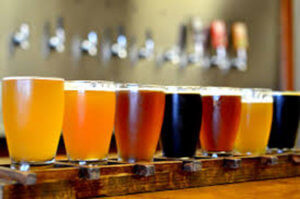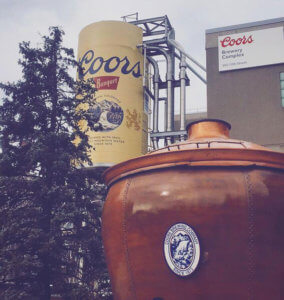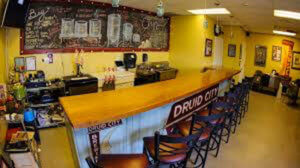Craft vs. Commercial: Who Wins?
Published on October 18, 2017, at 1:46 p.m.
by Hope Runyan.
“Let’s head downtown; a cool new brewery just opened this week.”
With more than 5,300 breweries in the United States, the beer industry is continuing to grow and defend its title as one of the largest industries in the nation. More specifically, the biggest contributor of this growth comes from the age of micro-brewing.
Consumers are swapping bottles for pint glasses, and the phrase “craft beer” is slowly becoming more present in our everyday vocabulary. So, what does this mean for big, commercial brewers?

The industry
Today, Anheuser-Busch, Miller Coors and Heineken are the most prominent commercial breweries in America. Competing with these large brands are small, craft breweries trying to sell their own individual experiences.
The battle between craft and commercial breweries has seen its controversies, like Budweiser’s 2015 Super Bowl ad “Brewed the Hard Way,” which stereotyped craft beer drinkers and led to social media backlash. Budweiser followed up with “Not Backing Down,” in 2016, which continued the theme of Budweiser as a harder, better beer. On the other side, craft breweries around the world took to social media to post spoofs of these ads and voice their opinions on which type of beer has more taste, and ultimately, more of a story.
The debate goes on, but one thing is certain — craft beer is generating less sales than commercial beer.
Staying relevant
In a market where craft beer continues to be increasingly popular, commercial breweries are reinforcing their company values and communicating their passion for beer to their publics.

For MillerCoors, brand image is a key component to remaining a relevant brand in the industry. Headquartered in Chicago “with over 450 years of combined brewing heritage,” MillerCoors specializes in “a light beer for everyone.” And, like other commercial brewers, it faces the immediate competition of craft beer.
“People know our brand, and they’re comfortable with it,” said Kelly Kress, on premise sales representative for MillerCoors in Chicago. “It’s sustainable, and definitely doesn’t burn a whole in your pocket.”
MillerCoors keeps its audience by delivering a reliable beer. Its customers are at home with the brand, and MillerCoors aims to keep producing the product they know and love, said Kress.
To compete directly with the craft beer industry, the company acquired a small selection of craft breweries, the most well-known being Blue Moon Brewing Company. This appeals to MillerCoors supporters who are interested in craft beer, but do not necessarily want to stray from the brand.
“From the perspective of a bar owner, Miller Lite is more profitable. Bars that offer both craft and light beer will typically have more MillerCoors product purchases because it fits every occasion,” said Kress.
Commercial breweries capitalize on the session beer, a drink that you can consume several of, without unexpectedly getting drunk. Not every consumer can handle the weight of a craft beer and will instead opt for a light beer from a commercial brewer. Light beers are practical for several occasions — especially for going out. Craft beers might be stereotyped for providing a chill and relaxing atmosphere, but you certainly won’t be purchasing six craft brews at your favorite bar downtown with the intent of a long night ahead.
The competition
While commercial brewers are generating larger profits in the industry, the popularity of local craft breweries still stands tall. It’s authentic, and customers can meet the brewmasters who make the beer.

For Bo Hicks, owner of Druid City Brewing Company in Tuscaloosa, Alabama, craft brewing is about community. He said it’s a mix of the “local movement” of supporting local farmer’s markets, restaurants and breweries, a good product, and overall community support that makes Druid City relevant.
Each brewery is different; you can find three breweries within the same area of a city and each one will provide a unique atmosphere. Customers find their niche brewery and reinforce its individual culture. In the end, it’s the people who make craft beer so personal, and therefore, competitive. Sometimes, staying small is the best way to remain big.
“Taking care of your home market, rather than trying to expand out to larger audiences, is what we focus on at Druid City,” said Hicks. “Being important to the culture of your town will keep people coming back.”
In this debate, there is no clear winner. Large, commercial breweries have loyal consumers who are committed to a brand, make more profit and really enjoy making beer. Small, craft breweries have locals who are in love with the experience, attract a large, diverse crowd and also really enjoy making beer.
So, who wins? In an industry that is dedicated to friendly conversation, new neighbors and making memories, it’s safe to say that we all do.




